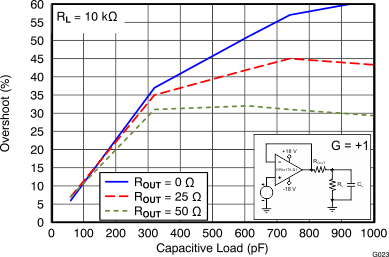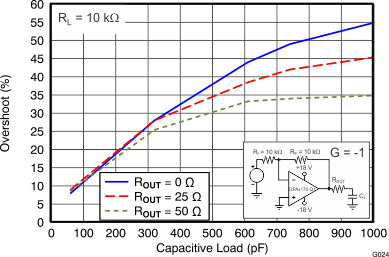ZHCSFP9B December 2016 – November 2017 OPA170-Q1 , OPA2170-Q1 , OPA4170-Q1
PRODUCTION DATA.
7.3.4 Capacitive Load and Stability
The dynamic characteristics of the OPAx170-Q1 are optimized for common operating conditions. The combination of low closed-loop gain and high capacitive loads decreases the phase margin of the amplifier and can lead to gain peaking or oscillations. As a result, heavier capacitive loads must be isolated from the output. The simplest way to achieve this isolation is to add a small resistor (for example, ROUT equal to 50 Ω) in series with the output. Figure 39 and Figure 40 are graphs showing small-signal overshoot versus capacitive load for several values of ROUT. See Feedback Plots Define Op Amp AC Performance for details of analysis techniques and application circuits.

| 100-mV output step | G = 1 |

| 100-mV output step | G = –1 |